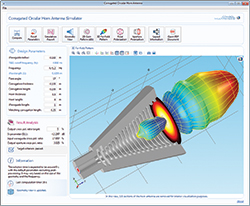
If you have to frequently revise your RF and microwave designs to produce a viable end product, it could be you are not taking the effects of other physics into account. If you use multiphysics simulation software, you can create designs that will be optimized for the real world during the design process. COMSOL Multiphysics® version 5.2 gives all of these benefits plus the ability to wrap your models in an easy-to-use interface that can be shared in the form of apps. Real-world devices and products do not work in isolation. You may want to simulate the electromagnetic properties of a cell phone (see Figure 1). To understand how the device will perform in reality, you need to consider the effects of heat transfer and the chemical properties of the battery. Similarly, if you want to accurately model a microwave oven, you need to simulate the coupled effect of heat transfer on the product design.
COMSOL Multiphysics is an all-encompassing multiphysics simulation tool that offers these capabilities. Going beyond multiphysics simulation, the Application Builder and COMSOL Server™ product enables simulation engineers to build and share applications based on their models. Simulation apps are simplified user interfaces for an underlying simulation. With an app, you can more quickly test parameters and see how different physical elements affect your design.
Complete Suite of Capabilities
For a simple, streamlined workflow when simulating your RF device design, use the RF Module, an add-on product to the COMSOL Multiphysics platform. Extensive capabilities make it easy to accurately model electromagnetic wave propagation and resonant behavior; simulate coupled physics effects such as structural deformations and heating; and compute electromagnetic field distributions, reflection, transmission, impedance and S-parameters.
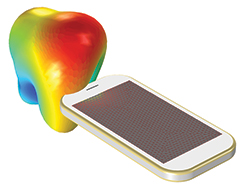
Figure 1 The far field radiation pattern of a mobile device antenna, plotted in 3D in the COMSOL Multiphysics simulation software.
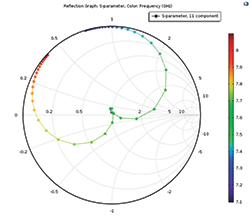
Figure 2 Smith chart created with the RF Module.
Modeling RF and microwave designs requires just a few simple steps. Set up the geometry of your model as a 1D, 2D or 3D structure and select the required materials from an inclusive materials library. Or you can easily import an existing geometry from a favorite CAD program. Then, you select an analysis type for the simulation, including the governing equations, field formulations, or as an eigenvalue, frequency domain or fully transient problem. Before solving, define the ports and boundaries of your device with a full range of settings. The boundary conditions can represent perfect electrically conducting surfaces, thin lossy boundaries, excitation boundaries for modeling ports and lumped capacitive, inductive, and resistive elements. The RF Module meshes your model automatically. Once the model is solved, you can visualize your results and postprocess them for further analysis directly in the software’s user interface.
Version 5.2 of COMSOL Multiphysics, which was released in November 2015, includes improvements to the core functionality, the Application Builder, COMSOL Server and all of the add-on modules. The RF module includes a new feature specific to microwave and RF modeling: Smith charts are now available for visualizing the impedance of a transmission line and impedance matching (see Figure 2).
In the core software platform, COMSOL Multiphysics now includes more robust meshing capabilities, which provide more accurate and reliable results. You are able to create annotations directly in plots when postprocessing simulation results.
Benefits of Specialized Apps
Included in the COMSOL Multiphysics software platform, the Application Builder enables models to be saved as applications or apps. For example, you can create a model of an antenna design, save it as an app and add forms for different design parameters such as the length and thickness of the antenna, length of the waveguide, and frequency. In the finished app, these inputs can quickly be changed and the simulation rerun repeatedly to find an optimal combination of parameters. As of version 5.2, the Application Builder allows app users to update simulation plots while the app is solving, to follow the solution’s progress. This is especially useful for more complex simulations that may take longer to complete. New editor tools make it easy to create an app to custom specifications.
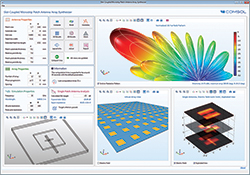
Figure 3 The microstrip patch antenna array synthesizer is an RF simulation app optimized for 5G technology.
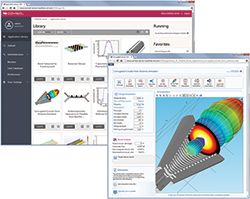
Figure 4 A selection of demo apps are available in COMSOL Server™.
COMSOL Multiphysics version 5.2 includes many demonstration apps to show how apps are built and used. One of these is the new microstrip patch antenna array synthesizer (see Figure 3), which enables testing different parameters for an antenna array design optimized for 5G technology. Over 50 demo apps are included for a variety of specific uses. You can access the examples in the Application Library in COMSOL Multiphysics or online in the Application Gallery at www.comsol.com/models.
The COMSOL Server product enables sharing apps that you create with those who should use them. Apps can be shared with other design engineers working on the same project, so they can run their own tests without waiting for simulation results. Sales and support teams can use apps to help customers design a specific version of a product or adjust and customize its parameters. Using COMSOL Server, apps run in a web browser or using COMSOL Client (see Figure 4).
During the life cycle of your RF and microwave design process, simulation can help to reduce costs, resources and time — while enabling you to produce more accurate designs.
COMSOL, Inc.
Burlington, Mass.
www.comsol.com
